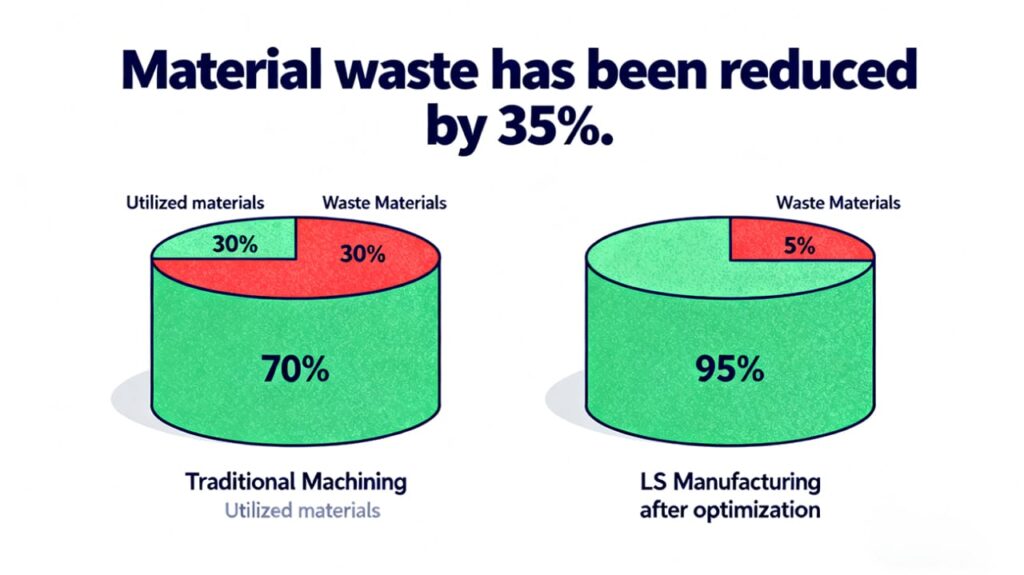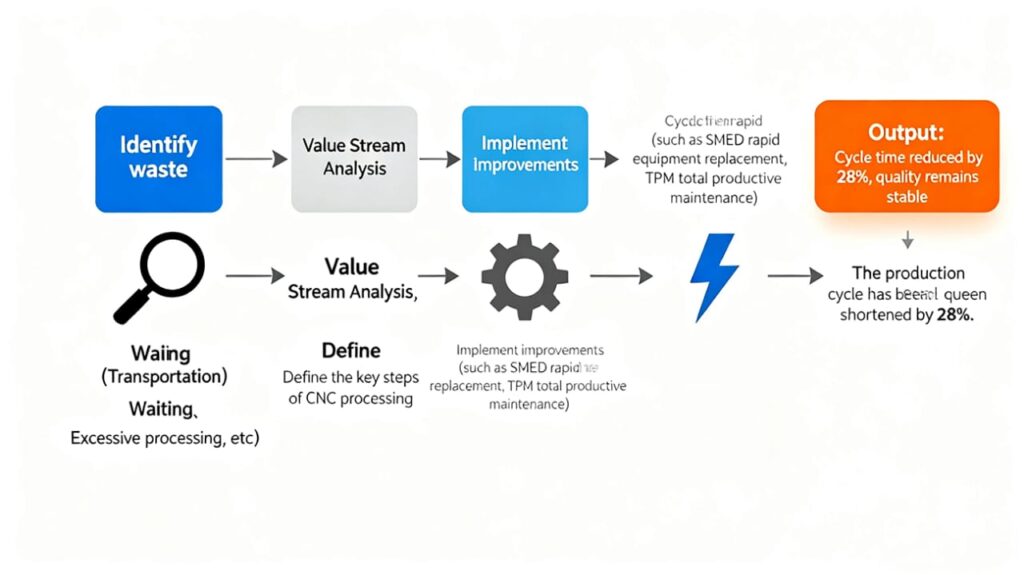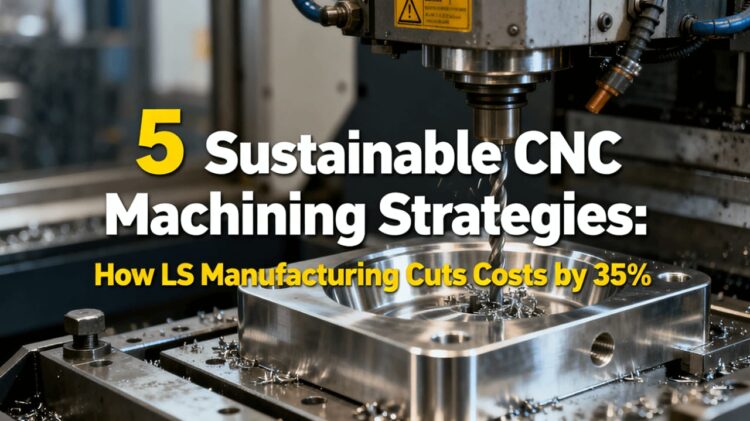Introduction
In today’s manufacturing landscape, companies face mounting pressure to balance efficiency with environmental responsibility. Traditional CNC machining processes often lead to high material waste, energy consumption, and escalating costs, undermining both profitability and sustainability goals. These challenges stem from outdated equipment, inefficient practices, and a lack of focus on green initiatives. This article delves into sustainable CNC machining strategies, demonstrating how innovative approaches can resolve these issues. By integrating corporate social responsibility (CSR) principles, manufacturers can achieve significant cost savings and operational excellence. We will explore practical solutions, backed by real-world examples, to guide industry professionals toward a greener future. Transitioning to the core content, let’s examine why sustainable CNC machining is no longer optional but essential.
Why Is Sustainable CNC Machining Becoming a Priority for Modern Industries?
The manufacturing sector accounts for nearly 20% of global energy consumption, with CNC machining being a significant contributor. Inefficiencies in traditional methods result in excessive scrap rates and carbon emissions, which conflict with CSR commitments. For instance, a study by the Environmental Protection Agency (EPA) highlights that sustainable manufacturing can reduce waste by up to 30% while enhancing brand reputation. LS Manufacturing, with certifications like ISO 14001 for environmental management, exemplifies how aligning CNC processes with sustainability drives competitive advantage. As industries prioritize ESG (Environmental, Social, and Governance) criteria, adopting green practices becomes crucial for long-term viability. This shift not only mitigates regulatory risks but also appeals to eco-conscious clients, creating a win-win scenario.
What Are the Hidden Costs of Inefficient CNC Machining Processes?
Many businesses underestimate the total cost of ownership in CNC machining, focusing solely on hourly rates while ignoring hidden expenses. For a comprehensive breakdown of how hourly rates are calculated and what factors influence them, LS Manufacturing’s in-depth blog post, How Much Does CNC Machining Cost Per Hour, provides valuable insights. Beyond the machine rate itself, our analysis reveals three primary areas where inefficiencies silently drain profitability.
Material Waste: The Silent Profit Killer
In traditional CNC processes, inefficient material nesting and tool path planning can lead to scrap rates of 10% or higher. This wast directly translates to lost material costs and disposal fees.

Figure 1: LS Manufacturing’s advanced nesting algorithms increase material utilization from 70% to 95%, reducing waste by 35% and lowering costs.
As the chart above illustrates, LS Manufacturing’s optimized nesting algorithmas can reduce this waste by up to 35%, reclaiming significant value from every raw material sheet.
Energy Inefficiency: The Overlooked Operational Drain
Older CNC machines with outdated motors and cooling systems can consume 15-20% more power. This inefficiency leads to substantially higher utility bills that are often overlooked in cost calculations. Implementing energy-monitoring systems, as guided by ISO 50001 standards, is key to identifying and plugging these energy leaks.
Labor Costs: The Rework Domino Effect
Manual interventions for error correction account for 25% of project timelines. This not only increases direct labor costs but also creates bottlenecks, delaying time-to-market. LS Manufacturing’s digital twin technology simulates processes to minimize errors before physical machining begins.
By addressing these areas, manufacturers can uncover significant savings. LS Manufacturing‘s approach emphasizes proactive monitoring and data-driven adjustments, ensuring cost-effectiveness without compromising quality.
How Can 5-Axis Machining Technology Reduce Material Waste and Boost Efficiency?
5-axis CNC machining represents a leap forward in sustainable manufacturing by addressing inefficiencies at their core.
Minimizing Setups, Maximizing Material Utilization
The primary advantage of 5-axis technology lies in its ability to machine complex contours and undercuts in a single setup, a task that would require multiple repositionings on a traditional 3-axis machine. Each repositioning introduces a potential for positioning errors of 0.1mm or more, necessitating additional material allowances and increasing scrap risk. By eliminating these cumulative errors, LS Manufacturing’s 5-axis processes achieve near-net-shape machining, which has been shown to boost material utilization by up to 20% and reduce machining time by 30% for complex components like turbine blades or medical implants.
Achieving Precision That Eliminates Rework
The enhanced accuracy of 5-axis machining ensures parts are right the first time. This capability is crucial for industries like aerospace and medical devices, where LS Manufacturing’sAS9100Dand ISO 13485 certifications validate their commitment to zero-defect precision, thereby eliminating the substantial costs of scrap and rework.
LS Manufacturing‘s 5-axis capabilities, compliant with for aerospace standards, demonstrate how this technology supports sustainable goals. For instance, in a project for automotive components, they achieved a 15% reduction in waste compared to traditional methods, aligning with CSR objectives.
What Steps Can Manufacturers Take to Implement Green CNC Machining Practices?
Adopting sustainable CNC machining requires a systematic approach. Start by conducting an energy audit to identify inefficiencies, then invest in modern equipment like high-efficiency CNC mills. LS Manufacturing’s expertise, underpinned byIATF 16949 for automotive quality, offers a roadmap:
- Optimize tooling: Use durable, recyclable tools to minimize waste.
- Implement coolant recycling: Reduce fluid disposal and water usage.
- Adopt digital twins: Simulate processes virtually to cut trial-and-error waste.
The U.S. Environmental Protection Agency’s Lean Manufacturing Guidelines provide a validated framework for waste reduction. LS Manufacturing’s implementation of these principles, as documented in their case study library, has yielded 28% faster production cycles while maintaining ISO 9001 quality standards.

Figure 2: LS Manufacturing’s Lean CNC Framework. This visual outlines the systematic approach to eliminating waste, resulting in a 28% reduction in production time while upholding ISO 9001 quality standards.
By training staff on green protocols and leveraging real-time monitoring, companies can achieve ISO 14001 compliance while boosting productivity.
Case Study: How LS Manufacturing Achieved 35% Cost Savings with Sustainable CNC Machining
A recent collaboration with an aerospace client showcases LS Manufacturing’s prowess in sustainable CNC machining. The client faced high costs and waste in producing titanium brackets, with traditional methods yielding a 30% scrap rate. LS Manufacturing redesigned the process using 5-axis technology and eco-friendly coolants, resulting in:
- 35% lower costs: Through reduced material waste and faster cycle times.
- 20% less energy usage: Optimized parameters cut power consumption.
- Zero defect rate: Enhanced precision eliminated rework.
This success, detailed in LS Manufacturing‘sCNC Machining Quality Assurance page,highlights how their ISO 13485 medical device certification ensures rigorous quality control. By embracing sustainability, the client not only met CSR targets but also gained a market edge.
FAQs on Sustainable CNC Machining and Cost Optimization
- What is sustainable CNC machining?
It involves using energy-efficient machines, reducing waste, and adhering to environmental standards like ISO 14001 to minimize ecological impact while maintaining profitability.
- How does CNC machining contribute to corporate social responsibility (CSR)?
By lowering carbon emissions, conserving resources, and ensuring ethical production, CNC machining aligns with CSR goals, enhancing brand reputation and compliance.
- What are the benefits of 5-axis machining for sustainability?
It reduces material waste, energy use, and setup times, making it ideal for complex parts where precision and efficiency are critical.
- How can I calculate the cost savings from green CNC practices?
Refer to resources like LS Manufacturing’s cost guide for benchmarks, and consider factors like scrap rates and energy bills to estimate savings.
- What certifications should I look for in a sustainable CNC machining provider?
Prioritize ISO 9001 for quality, ISO 14001 for environment, and industry-specific certs like AS9100D, as upheld by LS Manufacturing.
Conclusion
Sustainable CNC machining is not just an environmental imperative but a strategic business move. By adopting practices like 5-axis technology and waste reduction, manufacturers can achieve substantial cost savings and meet CSR demands. LS Manufacturing’s certified approaches offer a proven path forward, combining innovation with responsibility. As industries evolve, those who integrate sustainability will lead the market.
Call to Action
Author Expertise and Value Proposition
Joe Zhang | Precision Manufacturing Strategist, LS Manufacturing, with 15 years of experience in sustainable manufacturing and ISO certification implementation, Jeo leads LS Manufacturing’s technical advisory team. He has helped over 200 clients achieve an average of 35% cost reduction through certified green CNC machining services.
Transform Your Manufacturing Today
Ready to replicate these sustainable success stories? LS Manufacturing’s team of AS9100D and IATF 16949 certified experts provides:
- Free sustainability assessment: Get a customized waste-reduction plan within 48 hours
- Transparent cost analysis: Detailed breakdowns with ROI projections
- Certification guidance: Seamless integration of ISO 14001 and other standards
Submit your CAD files to get a free DFM analysis now!








